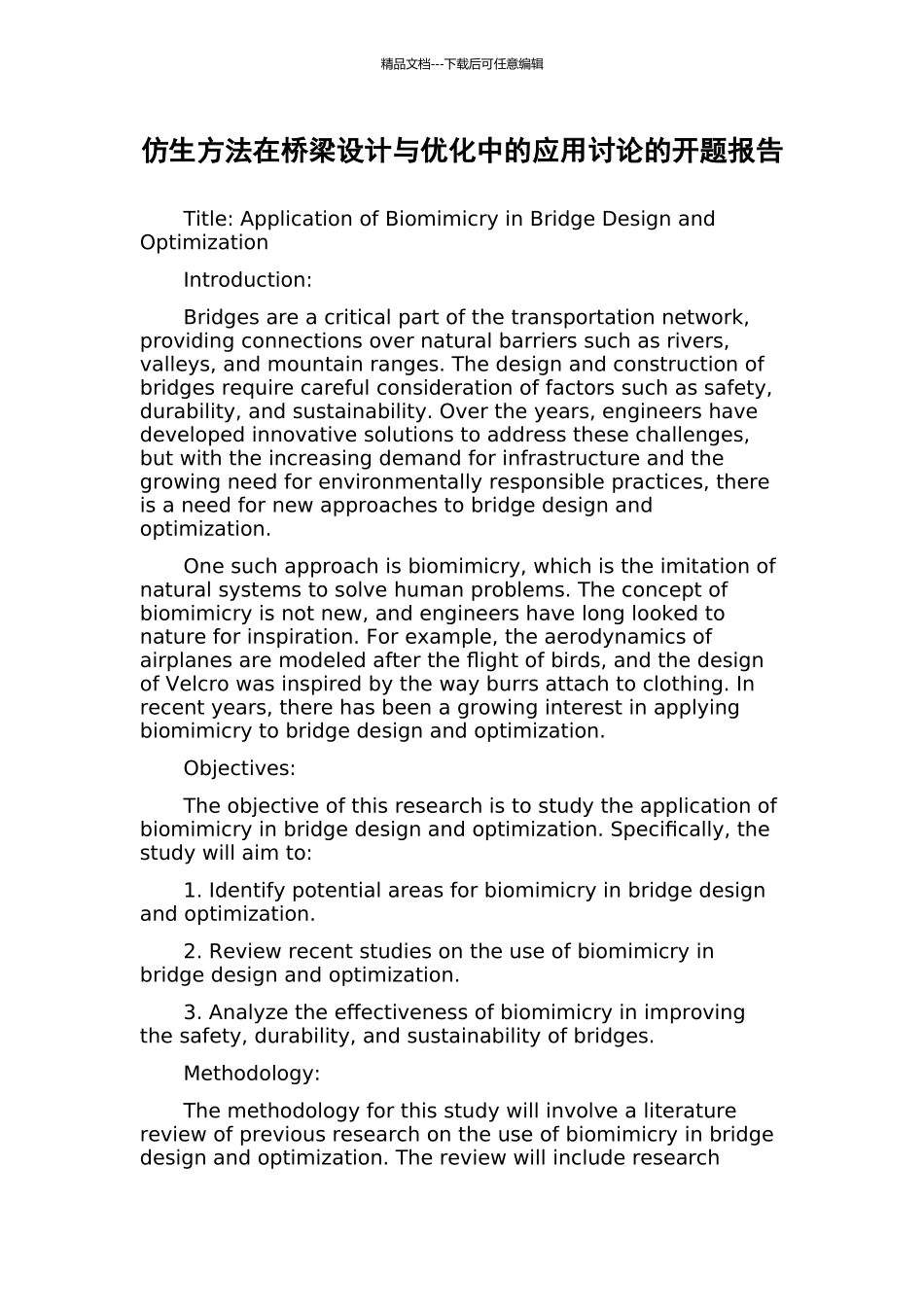精品文档---下载后可任意编辑仿生方法在桥梁设计与优化中的应用讨论的开题报告Title: Application of Biomimicry in Bridge Design and OptimizationIntroduction:Bridges are a critical part of the transportation network, providing connections over natural barriers such as rivers, valleys, and mountain ranges. The design and construction of bridges require careful consideration of factors such as safety, durability, and sustainability. Over the years, engineers have developed innovative solutions to address these challenges, but with the increasing demand for infrastructure and the growing need for environmentally responsible practices, there is a need for new approaches to bridge design and optimization.One such approach is biomimicry, which is the imitation of natural systems to solve human problems. The concept of biomimicry is not new, and engineers have long looked to nature for inspiration. For example, the aerodynamics of airplanes are modeled after the flight of birds, and the design of Velcro was inspired by the way burrs attach to clothing. In recent years, there has been a growing interest in applying biomimicry to bridge design and optimization.Objectives:The objective of this research is to study the application of biomimicry in bridge design and optimization. Specifically, the study will aim to:1. Identify potential areas for biomimicry in bridge design and optimization.2. Review recent studies on the use of biomimicry in bridge design and optimization.3. Analyze the effectiveness of biomimicry in improving the safety, durability, and sustainability of bridges.Methodology:The methodology for this study will involve a literature review of previous research on the use of biomimicry in bridge design and optimization. The review will include research 精品文档---下载后可任意编辑articles, reports, and case studies from various sources such as academic journals, books, and conference proceedings.The study will focus on a range of biomimetic approaches, including structural design, material selection, and maintenance. Various examples of biomimetic bridge design will be evaluated based on their performance in terms of safety, durability, and sustainability.Expected Outcomes:The study is expected to provide a comprehensive overview of the use of biomimicry in bridge design and optimization. It will identify potential areas for biomimicry and evaluate the effectiveness of biomimetic approaches in enhancing the performance of bridges. The study will also identify gaps in the existing literature and suggest areas for further research.Conclusion:The application of biomimicry in bridge design and optimization offers a promising approach to address the challenges of building safer, more durable, and more sustainable infrastructure. This study will contribute to the existing body of knowledge on biomimicry and provide insights into its potential use in bridge engineering.

